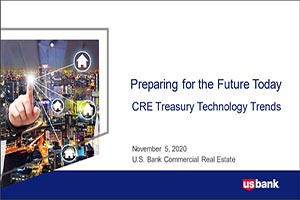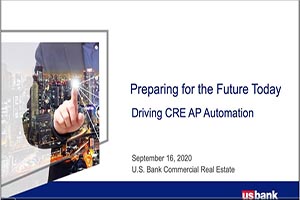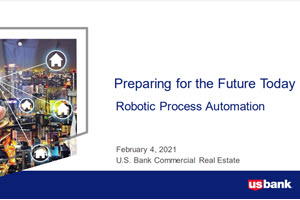
ABCs of APIs: Drive treasury efficiency with real-time connectivity

The secret to successful service provider integration

Benefits of billing foreign customers in their own currency

Improve government payments with electronic billing platforms

The AI journey in finance: How to make it part of your strategy

Blockchain: Separating hype from substance

Payment industry trends that are the future of POS

5 Ways to protect your government agency from payment fraud

Government agency credit card programs and PCI compliance

3 benefits of integrated payments in healthcare

3 ways to make practical use of real-time payments

Instant Payments: Accelerating treasury disruption

White Castle optimizes payment transactions

Webinar: CSM corporation re-thinks AP

Drive digital transformation with payments innovation

Unexpected cost savings may be hiding in your payment strategy

Want AP automation to pay both businesses and consumers?

Ways prepaid cards disburse government funds to the unbanked

Three healthcare payment trends that will continue to matter in 2022

ePOS cash register training tips and tricks

Restaurant surveys show changing customer payment preferences

Restaurant surveys show changing customer payment preferences

Increase working capital with Commercial Card Optimization

Modernizing fare payment without leaving any riders behind

4 benefits to paying foreign suppliers in their own currency

A simple guide to set up your online ordering restaurant

Tap-to-pay: Modernizing fare payments pays off for transit agencies and riders

Understanding and preparing for the new payment experience

How Everyday Funding can improve cash flow

4 ways Request for Payments (RfP) changes consumer bill pay

Access, flexibility and simplicity: How governments can modernize payments to help their citizens

Automate accounts payable to optimize revenue and payments

Automate escheatment for accounts payable to save time and money

Banking connectivity: Helping businesses deliver the easier, faster, more secure customer experience of the future

Cashless business pros and cons: Should you make the switch?

Escheatment resources: Reporting deadlines for all 50 states

Higher education and the cashless society: Latest trends

How to improve digital payments security for your health system

Finance or operating lease? Deciphering the legalese of equipment finance

Empowering managers with data automation and integration

Treasury management innovations earn Model Bank awards

Overcoming the 3 key challenges of a lump sum relocation program

P2P payments make it easier to split the tab

How to accept credit cards online

How real-time inventory visibility can boost retail margins

Role of complementary new channels in your payments strategy

When your spouse has passed away: A three-month financial checklist

6 timely reasons to integrate your receivables

Webinar: CRE technology trends

Managing the rising costs of payment acceptance with service fees

Safeguarding the payment experience through contactless

COVID-19 safety recommendations: Are you ready to reopen?

What corporate treasurers need to know about Virtual Account Management

Buying or leasing? Questions to ask before signing a contract

How jumbo loans can help home buyers and your builder business

How to apply for a business credit card

Rethinking common time management tips

Checklist: What you’ll need for your first retail pop-up shop

Why ecommerce for small business strategy is integral

Streamline operations with all-in-one small business financial support

3 ways to gain loyalty with your customers

How running a business that aligns with core values is paying off

Meet the Milwaukee businessman behind Funky Fresh Spring Rolls

Dear Money Mentor: How do I begin paying off credit card debt?

3 awkward situations Zelle can help avoid

How to save money in college: easy ways to spend less

Top 3 ways digital payments can transform the patient experience

Hospitals face cybersecurity risks in surprising new ways

Webinar: AP automation for commercial real estate

Crack the SWIFT code for sending international wires

Myth vs. truth: What affects your credit score?

Dear Money Mentor: How do I set and track financial goals?

How AI in treasury management is transforming finance

How mobile point of sale (mPOS) can benefit your side gig

Webinar: Robotic process automation

Can faster payments mean better payments?

Hospitals face cybersecurity risks in surprising new ways

Enhancing the patient experience through people-centered payments

Digital trends poised to reshape hotel payments

Unexpected cost savings may be hiding in your payment strategy

Colleges respond to student needs by offering digital payments

Luxury jeweler enhances the digital billing and payment customer experience

